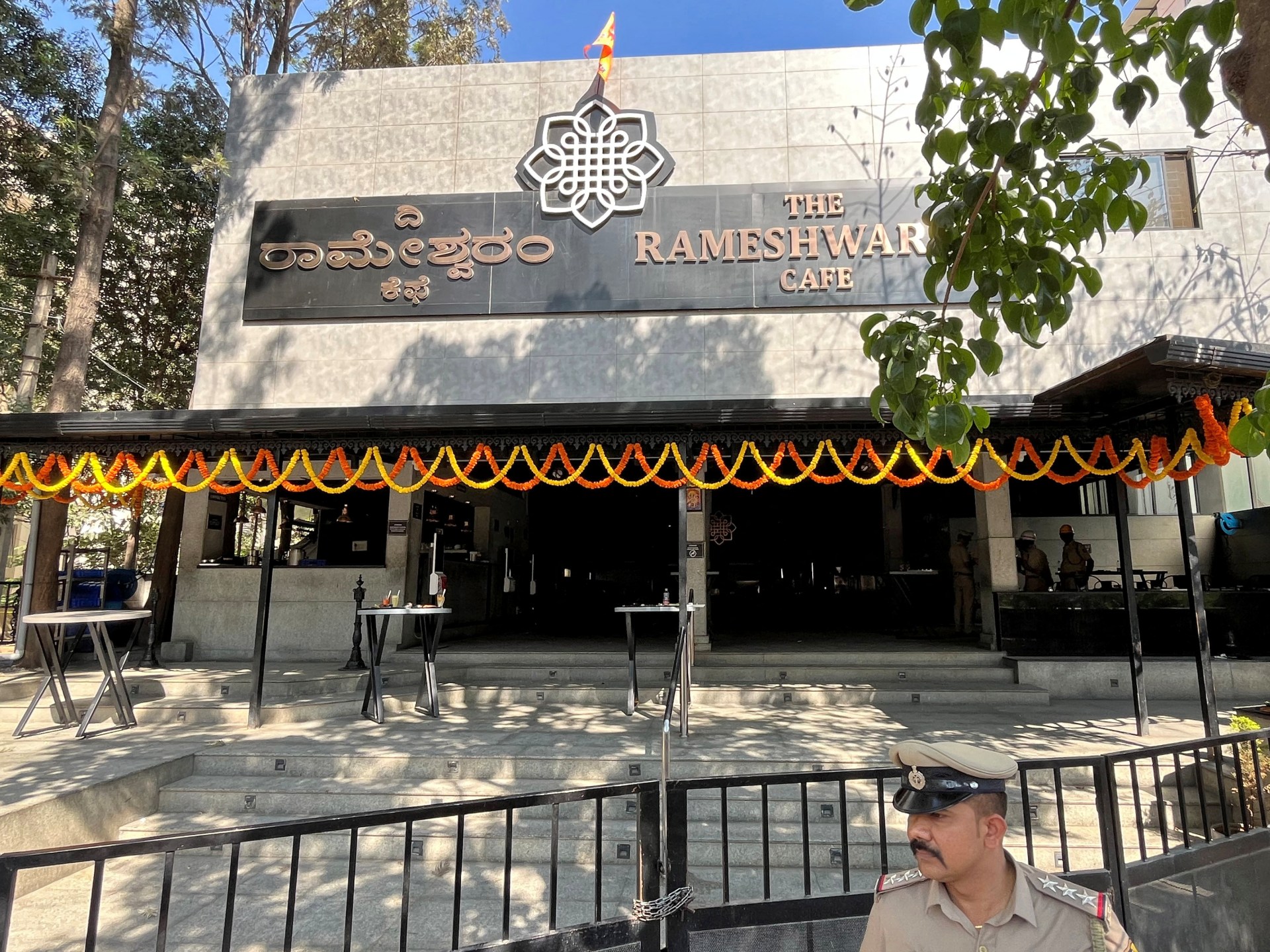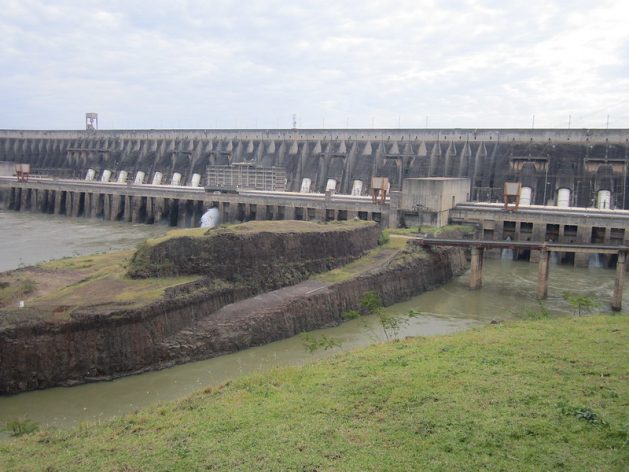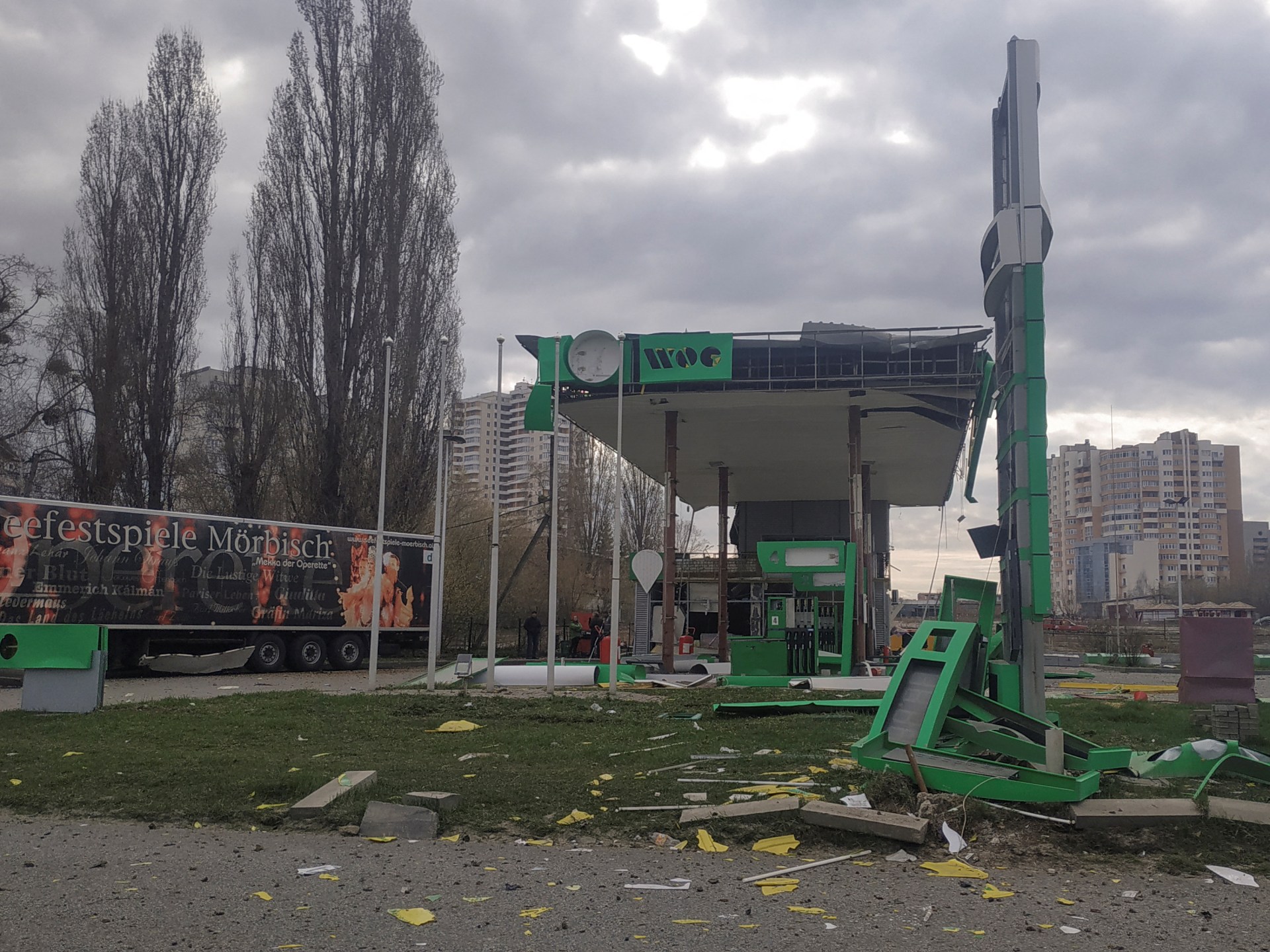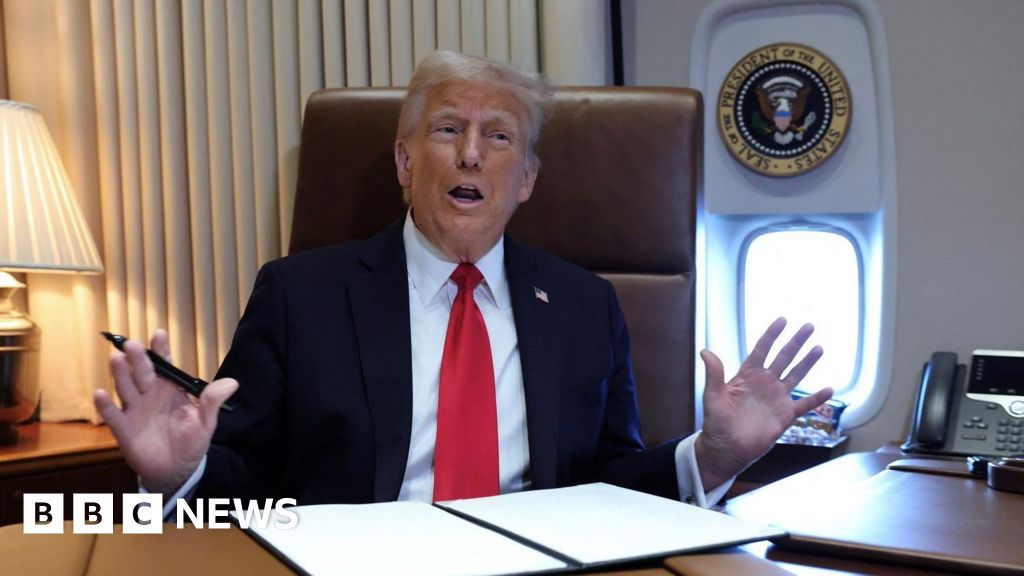Mexico City is sinking, running out of water: How can it be saved? | Sustainability
Mexico City, Mexico – Walking through Mexico City’s historic Zocalo district, Dario Solano-Rojas points to signs of a subterranean catastrophe that is under way.
The roads are uneven in the city’s central plaza, the streets and walkways are sloped and twisting. Many building foundations have sunk dramatically while others have a visible lean, resulting in cracks in the surrounding pavement. Two of the city’s most iconic structures – The Palacio de Bellas Artes and the Metropolitan Cathedral (built from the stones of the Aztec temple that once stood there) – seem to be disappearing into the earth.
Inside the cathedral, Solano-Rojas, a professor of geological engineering at the National Autonomous University of Mexico, points to a glass-encased box connected to the ceiling by a taut wire. At the centre of the nave hangs a heavily-weighted point, which charts a line indicating how the cathedral has shifted unevenly over the centuries, with the worst-impacted section dropping by some 2.5 metres (8.2 feet).
Mexico City is sinking, as are its greatest monuments. Parts of the city of nearly 9 million people are descending into the earth by as much as 40cm (15 inches) annually – all driven by a deepening water crisis with roots that go back 500 years, and that reveals itself today in stunning ironies.
One of Mexico City’s most renowned attractions, the canals of Xochimilco, with their lush lagoons and colourfully decorated boats, date back to the precolonial lake that once satiated the city’s thirst. Today, its adjacent neighbourhoods have run out of water.
To its north is Iztapalapa, one of the city’s most notoriously impoverished, dangerous colonias (neighbourhoods), where the water supply has been inconsistent for years. It frequently slows to a trickle or stops entirely for days and even weeks.
While it is, sadly, not surprising that a disenfranchised district would experience breakdowns in essential services, perhaps more unanticipated are the water shortages in the adjacent region of Coyoacan, an upper-crust neighbourhood best known as the once-home of painting power couple Frida Kahlo and Diego Rivera.

At the heart of the city’s struggle – and its sinking – is its reliance on underground water. As the underground aquifer drains and the ground above it settles, the city sinks deeper and deeper. “There’s one solution: Stop taking water from underground,” says Solano-Rojas. “But that’s not going to happen.”
The situation in Mexico City shows how the rich and the poor are both ill-prepared for when water supplies run dry – and money can only go so far.
A problem for the ages
“I was born with this problem existing,” says Solano-Rojas. “I thought it was normal everywhere, but it’s not.”
To understand the “subsidence” of the city and the water shortage causing it, it is necessary to look back half a millennium. The Aztecs had already erected a civilisation atop and amid the local network of lakes, most notably the capital of Tenochtitlan, which stood on the site of Mexico City’s present-day central district.
Had the penultimate Aztec ruler Moctezuma’s empire been allowed to continue expanding, it is possible that it would have eventually run into similar water supply issues. But the arrival of the Spanish conquistador Hernan Cortes and his colonial forces disrupted all that – they levelled Tenochtitlan and built their own city in its place.
“It’s a historical problem,” explains Elena Tudela Rivadeneyra, a professor of architecture at the National Autonomous University of Mexico and the co-founder of the Office of Urban Resilience, which develops strategies to help cities weather climate change. “Ever since we decided to dry out the lake system that we had here – and that started [shortly after the Spanish arrived] around 1608 – we started having a difficult relationship with water.”
Draining the lakes and building over them created two major issues. First, it diminished the local water supply, requiring the city to import much of its fresh water – a significant portion of which must be pumped at great expense more than 100 metres (328 feet) up the sierra where the city perches. Second, as the city grew and consumed what water remained, the subsidence began. Problems snowballed from there.

A sinking city
One of the first things you notice as you land in Mexico City is that the airport runway is unusually bumpy. The increasingly uneven tarmac is a consequence of subsidence.
Listing buildings and uneven roads may be the most obvious impact of the subsidence, but bigger problems lurk out of view.
A recent study found that the integrity of the metro is progressively compromised – and there is more, “It also breaks the pipes,” says Tudela Rivadeneyra.
When Mexico City began modernising its municipal water supply during the 1940s – an event that Diego Rivera celebrated with the creation of stunning underwater murals you can visit at the Cárcamo Museum in Chapultepec Park – its population was only a few million. As that number exploded to the 22.5 million living there today, the water infrastructure not only failed to keep up with the rising demand, but was continually torn apart by subsidence.
Now, the city is losing some 40 percent of its water due to leaks in broken pipes.

“The leakages are quite difficult to deal with,” says Tudela Rivadeneyra. “Even if you replace them with new materials and more elastic and technical and technological solutions, you still have quite an issue.”
Water infrastructure has become a top consideration among voters in the city’s upcoming mayoral elections, and while candidates have made bold claims about fast fixes, Tudela Rivadeneyra says these are unrealistic. She notes that even if the city had the money for it – and it does not – the sheer amount of construction required for a rapid infrastructure rebuild is untenable in a city where people are forced to commute sometimes for hours each day. The increase in the city’s already notorious traffic would grind it to a standstill.
As Mexico City runs out of water, for many, the taps are already running dry.

Day Zero is already here
In the discussion of the city’s water crisis, the term “Day Zero” is frequently thrown around to describe the presumed date when wells will run dry. Many have set it for late June. But the situation is complicated.
“I don’t think a Day Zero is going to come,” says Solano-Rojas. “Day Zero has already happened.”
While popular central districts like Condesa and Roma are still relatively unscathed by the situation – though many of their once-majestic fountains now stand dry – residents in areas like Iztapalapa and Coyoacan will tell you that the concept of Day Zero is practically meaningless.
“Day Zero has been here for a lot of people around the whole metropolitan area,” says Tudela Rivadeneyra. “Twenty-five percent of the population does not receive enough water. Technically speaking, 98 percent of the population has the infrastructure to get it, but that doesn’t mean that you open up the tap and there’s water.”
The issue extends beyond Mexico City proper.
“We don’t have water at home on Saturdays and Sundays,” says Israel, a resident of the nearby town of Toluca. “Monday to Friday, the situation is irregular. There may be a day or two with water and the rest of the weekdays, we only get a very small amount.”
And in Cuernavaca, roughly an hour south of Mexico City, residents have blocked the highway to protest water shortages.

The situation has forced the use of stopgap solutions that can only go so far. “People can ask for trucks with water in those areas in which the situation is critical,” says Israel. “But the common solution with some people and local businesses I’ve talked with is that they are paying for private trucks to deliver them water.”
These water trucks – frequently accompanied by armed guards – are becoming ubiquitous throughout the city. Unsurprisingly, there has been talk about the cartel moving into the private water racket. In Mexico, if something can be commodified, the cartel runs it.
So, Day Zero has already come for many in the city, and for those who have not yet experienced it, the issue is more complicated than a date on a calendar.
This theoretical timeline refers specifically to the depletion of the Cutzamala Water System, which draws from neighbouring basins that are currently at approximately 30 percent capacity and provide about 30 percent of the city’s water. But that represents less than a third of the water supply: The rest is in the aquifer directly beneath the city.
“What’s really scary is the possibility of Day Zero for the aquifer, because it provides 70 percent of the water we consume,” says Tudela Rivadeneyra. “That is catastrophe. Right now, people are suffering and it’s not something to take lightly. Thirty percent is like 5 million people – a quarter of the population of the metropolitan area – not having enough water”, she says, adding that “the aquifer is not replaceable. That is not something you can pull off with water trucks”.
Experts disagree on how much longer the aquifer can last at current consumption rates, placing the number anywhere between five to 20 years. What is certain is that dramatic action must be taken to avoid a total water disaster.
“It’s like a glass where you sip water every day,” says Tudela Rivadeneyra. “Eventually, it will run out.”

The need for long-term solutions
While the city scrambles for quick solutions like water rationing, water trucks, individual conservation advocacy and rain-collecting (collection setups have been distributed to many businesses and homes but only recently, Mexico City saw its first drizzle in months), the crisis has been a long time in the making and solutions cannot happen overnight.
“There’s not much that can be done in the short term,” Tudela Rivadeneyra admits, “because there’s not enough time or money for it”. She is more hopeful about longer-term solutions but does not “think politicians are being practical about them or investing in them enough”.
Many significant changes must occur, but according to Solano-Rojas, one of the key adjustments is mental. “We’re using water thinking it’s a renewable resource,” he says. “We had this big push against single-use plastic like straws but we still have single-use water.”
In addition to pumping in tremendous quantities of fresh water, Mexico City also pumps out the vast majority of its used water as sewage to the nearby state of Hidalgo. This pipeline – a huge infrastructure undertaking called the Tunel Emisor Oriente – required substantial resources to build, and critics argue that it exacerbates rather than palliates the water crisis by evacuating water from the city rather than retaining it.
“We only treat 15 percent of the water,” says Tudela Rivadeneyra. “That’s a very low percentage, and almost all of the water we use goes to the sewage. So we’re just importing water and exporting all of the problems without dealing with it locally.”

With a presidential election looming, the incumbent Andres Manuel Lopez Obrador’s (AMLO) party, Morena, is desperate to appear to be addressing the growing water emergency. One of its primary proposals involves establishing new water wells in the hardest affected areas, but Tudela Rivadeneyra is doubtful, agreeing that in order to construct actual solutions, there must first be a major shift in mindset.
“If we do end up getting all of the water wells, bringing water trucks from wherever we can, from other basins – people will suffer anyways. The demand is too high,” she explains. “What we should be focusing on is what to do next and how to change the way we understand water in the city, and the way that water relates to urban development.”
Privatisation and climate change
One oft-cited contributor to the dearth of water is privatisation. Beer, soft drink, paper and chemical manufacturers have significant operations throughout Mexico City and the adjacent State of Mexico, and are granted enormous water concessions. What water regulations they do face are lax in enforcement or circumvented by corruption.
Experts note that these water rights can be revoked legally and that a precedent has been set by similar actions taken in the past.
“What they should be doing is what they did with the fossil fuel industry,” says Tudela Rivadeneyra. “Just make them go out of the city, because there’s not enough water for them here. They should move to other parts of the country where they have more opportunities to obtain water without drying out the few resources we have.”
She’s referring to a plan established by López Obrador to decentralise the government by relocating Mexico City-based agencies to less populated areas across the country in an effort to ease pollution and infrastructure strain in the megalopolis. While critics have pointed out that this goal was only partially met, it did move the state-owned Pemex petroleum company from its 51-storey tower in the city to the more sparsely populated coast of the state of Campeche, where most of Mexico’s fossil fuels are produced.
This sort of decentralisation, emphasises both Solano-Rojas and Tudela Rivadeneyra, is essential to solving the water crisis. Unfortunately, says the latter, relocating water-intensive industry will require prodigious political capital, but there is little willingness to expend it.
She notes that while the government has engaged in campaigns to raise awareness for the need for individual responsibility – shorter showers and the like – these efforts are not sufficient.
“But even if we all did that, it wouldn’t be enough if we still have these concessions,” she says.
And then, of course, there is climate change. On April 15, Mexico City saw its hottest day on record, amid a historic drought.
Rain is essential for renewing the aquifer and leveraging the city’s catchment strategies. In recent years, Mexico City has received less rain but more intense bursts of it. This complicates harvesting because sudden, short-lived eruptions of precipitation require larger gathering surfaces.
At the same time, it makes the city more prone to flooding, exacerbated by a lack of open and green spaces that would otherwise allow moisture to seep into the earth.
“We should be removing asphalt from parts of the city that don’t really need it, like peripheries,” says Tudela Rivadeneyra.
Asphalt blocks water seepage, which not only drives flooding but prevents rain from reaching the aquifer. The removal of asphalt is especially important in areas like Iztapalapa, which rests on porous basalt rather than an impervious lake bed like the rest of the city, and may prove vital to replenishing the underground reservoir.
“We need to be recharging the aquifer in order to not have a general Day Zero,” Tudela Rivadeneyra emphasises.

Collective action
Recently, it rained in Mexico City for the first time in a long while. This correspondent watched a tiny, very wrinkled elderly woman gaze up at the sky with unguarded delight that verged on relief, her arms spread towards the heavens.
If Mexico City is going to overcome this crisis, she and everyone else who lives there – industrial inhabitants in particular – will have to change how water is considered.
According to Tudela Rivadeneyra, that means “focusing on solutions that have more to do with collectivity. So, instead of having a building just demanding water because it exists, it’s like, what kind of water is it producing? How can we connect it to another building or area that requires that type of water?”
She encourages understanding where water originates and where it goeswhy streets become rivers.
“Know what’s going on below your feet,” she urges, “because water is very invisible. Making it visible changes the way we relate to it. Dealing with water in different ways that are more circular makes a lot of sense, and it’s not that tough.”
Can Mexico City achieve the ecosystemic circularity necessary to surmount its water emergency? With the worst yet to come, it seems it is not a matter of can but must.

Check out our Latest News and Follow us at Facebook
Original Source







